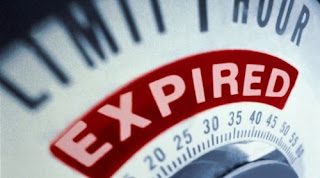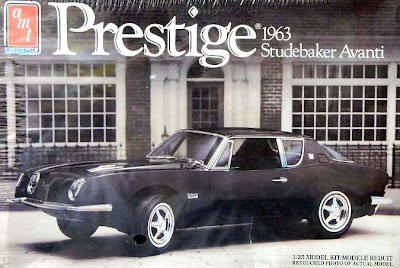The brisket was ready. It cooked for over four hours and was fork tender. The smell was overwhelming, making the whole house smell like Aunt Janet's back in the day. Of course I also had all the sides ready to go; carrot tsimes, potato latkes, and apple sauce. The brisket was center stage, the big show winner that draws my in laws up the street this time of year. All I had to do was to put out all the accompanying dishes, which includes horseradish in beet juice (don't knock it till you've tried it!). I grabbed the bottle from the refrigerator shelf and almost cried! It had expired three months earlier. Sniff! Now I had to run out and scour all the local groceries for the essential missing horseradish. This is not an area easy to procure such a cultural item. Tortillas I got, chilies of a thousand varieties, fresh jack fruit abounds, but no horseradish in beet juice for a hundred miles. Okay, I'm exaggerating a little. Wegman's carries it ten miles away. Guests were coming and the long awaited brisket was ready! I found a bottle of regular horseradish at grocer number three, so not all was lost. The brisket was still the star, but I know in my heart that Aunt Janet would never approve.
 The expired horseradish reminded me that it is again the time of year that I dread...smoke detector battery changing time. Twice a year I risk life and limb to change those darn batteries. I usually get a scare every time I replace each battery and the thing goes off to tell you it is okay. Thankfully I have a house with really low ceilings and it is a short fall. After I fall off the ladder and bruise something I always make the sorry trek up the stairs, and while poking in the medicine chest for some form of pain reliever I start checking all the expiration dates there too. I start with the kids liquid medicines. I don't want to make the midnight run out to the nearest pharmacy when one of the kids wakes up with a fever and won't go back to bed. I check my son's asthma medication too, it costs as much as college tuition at Penn State but the thought of his little wheezing red face, also at midnight, makes me pull out all the expired (and near expired and opened foil pouches) of the costly stuff. Then I'm onto the adult stuff. The Tylenol...expired. The Motrin...expired. The cold medicine...expired. The antibiotics from the last sinus infection...expired. Everywhere I looked the stuff was expired. Then I spied the toothpaste. The little crimped end has those prophesying dates of toxicity. Our toothpaste expired last month. ICK!
The expired horseradish reminded me that it is again the time of year that I dread...smoke detector battery changing time. Twice a year I risk life and limb to change those darn batteries. I usually get a scare every time I replace each battery and the thing goes off to tell you it is okay. Thankfully I have a house with really low ceilings and it is a short fall. After I fall off the ladder and bruise something I always make the sorry trek up the stairs, and while poking in the medicine chest for some form of pain reliever I start checking all the expiration dates there too. I start with the kids liquid medicines. I don't want to make the midnight run out to the nearest pharmacy when one of the kids wakes up with a fever and won't go back to bed. I check my son's asthma medication too, it costs as much as college tuition at Penn State but the thought of his little wheezing red face, also at midnight, makes me pull out all the expired (and near expired and opened foil pouches) of the costly stuff. Then I'm onto the adult stuff. The Tylenol...expired. The Motrin...expired. The cold medicine...expired. The antibiotics from the last sinus infection...expired. Everywhere I looked the stuff was expired. Then I spied the toothpaste. The little crimped end has those prophesying dates of toxicity. Our toothpaste expired last month. ICK!Yes, toothpaste DOES expire! All fluoride containing toothpastes are regulated by the FDA and have an expiration date that is, usually, about 2 years after manufacture. While brushing with expired toothpaste won't kill you, or even hurt you, you should still throw it out. The farther it is from the expiration date the less efficient it will be in cleaning your teeth. So throw out that old toothpaste and cook this recipe:
Aunt Janet's Brisket Recipe
Lawry's Seasoning Salt
Heinz's Chili Sauce, 1 bottle
1/2 cup Light or Dark Brown Sugar
2tbs Cider Vinegar
Directions:
Sprinkle both sides of brisket liberally with seasoning salt. Spread chili sauce over both sides of meat with the back of a spoon. Sprinkle brown sugar over chili sauce-coated meat then sprinkle the vinegar over the meat. The brown sugar and chili concoction will dissolve. Place in a pan large enough to hold the meat and cook covered in oven at 300 degrees for 3 hours then uncovered till meat is fork-tender.
Sprinkle both sides of brisket liberally with seasoning salt. Spread chili sauce over both sides of meat with the back of a spoon. Sprinkle brown sugar over chili sauce-coated meat then sprinkle the vinegar over the meat. The brown sugar and chili concoction will dissolve. Place in a pan large enough to hold the meat and cook covered in oven at 300 degrees for 3 hours then uncovered till meat is fork-tender.
A Family Dental Care Center: Dr. Seth Rosen
2030 West Main St. Norristown, PA 19403
610.631.3400











